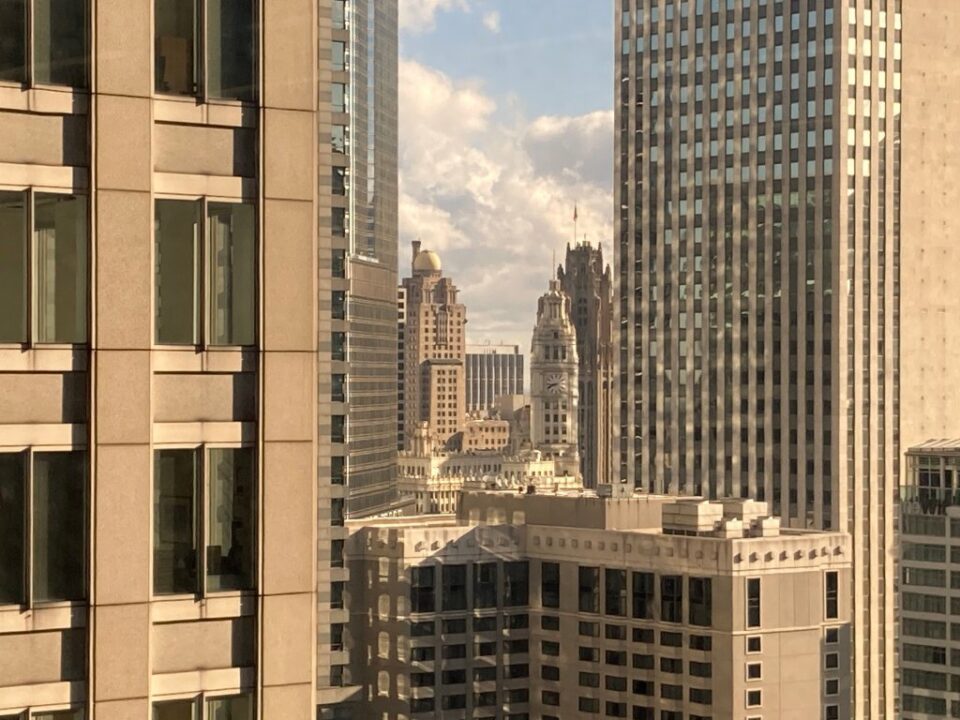The rocks embedded in the exterior of Chicago’s Tribune Tower famously were collected by newspaper correspondents on assignment in far flung locales.
The nearly 150 stones are pieces of famous structures throughout the world, including Egyptian pyramids, the Great Wall of China and St. Peter’s Cathedral in Rome. There’s even a Chicago brick taken from the home of Tribune founder Robert McCormick that’s dated to 1880.
But it was the limestone surrounding the famous rocks that received special attention not long ago as the tower’s owners converted the building from newspaper offices to condominium units.
The cream colored limestone was installed when the tower was constructed nearly a full century earlier, and portions were in need of repair.
“It was in bad shape for many reasons,” said Tom Van Etten, of Flossmoor, co-owner of Galloy & Van Etten, the firm hired to do restoration work on the building’s stone exterior. “Mostly because the steel backing was rusting and there was deterioration over 100 years.”
A year earlier, they’d completed a similar restoration across the river, at the London Guarantee and Accident building, now known as the London House Hotel, built around the same time as the Tribune Tower, using the same material. A third building, 333 N. Michigan Avenue, is another early 1920s building surrounding the Michigan Avenue Bridge clad with the same Indiana limestone.
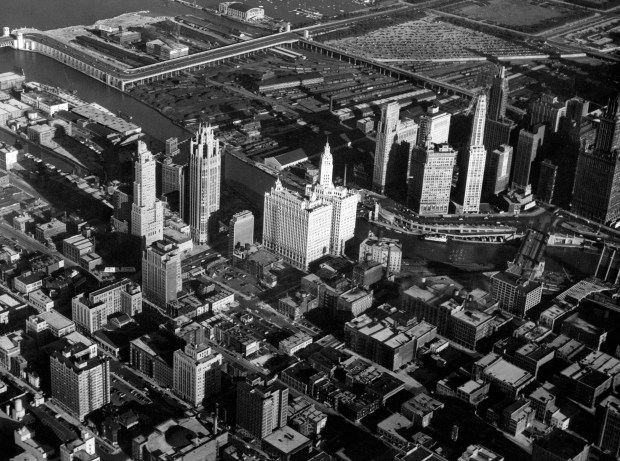
Both projects Van Etten’s company worked on required replacing some of the stone while matching it so the repairs would fit in seamlessly.
“You take some existing examples, cut them open to see what they are, go down to Bloomington and find the stone that’s the best match,” he said. “The beauty of Indiana limestone is the stone they’re quarrying today is the same stone they quarried over 100 years ago.”
Quarried from huge deposits around Bedford and Bloomington, Indiana, the material already had become a hit in the booming construction industry of the late 1890s. Van Etten’s great-grandfather, Dutch immigrant Abram Van Etten, hopped on the bandwagon as an 18-year-old entrepreneur when he opened his first stone shop at 123rd Street and Emerald Avenue. By 1903, he was able to construct his own shop, using Indiana limestone, at 118th and Halsted streets.
“Right away, it was all Indiana limestone,” Van Etten said. “There were a hundred stone companies in Chicago at the time. Everything was being built out of Indiana limestone.”
The stone’s popularity was well deserved, said Kevin Harrington, professor emeritus of architectural history at the Illinois Institute of Technology in Chicago, who co-wrote the 2003 guidebook “Chicago’s Famous Buildings,” now in its 5th printing.
“It’s an incredibly beautiful stone, and it’s been used for many of Chicago’s most iconic buildings,” he said.
Beyond the notable Michigan Avenue bridge area, there are the structures in the LaSalle Street financial district anchored by the Chicago Board of Trade building, much of Chicago’s Museum Campus area, Hyde Park and the Museum of Science and Industry — just about every area of the region.
Its fame spread throughout the country. Less than a decade after the Tribune Tower was erected, the Empire State Building in New York City was clad in Indiana limestone. Gilded age magnate George Vanderbilt used the stone for his Biltmore Estate in Asheville, North Carolina.
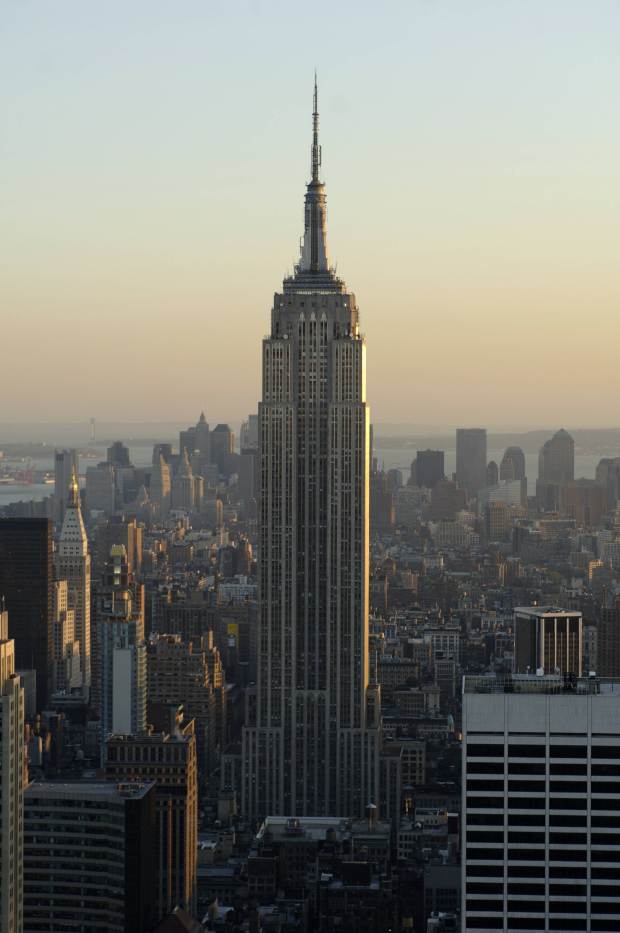
Harrington said the limestone is part of an ancient legacy left from an era millions of years ago when what would become the Midwest was covered in a great inland sea that stretched from western Ohio to eastern Nebraska. Sea creatures lived and died there for millennia, and in the ages since the remains of their shells were compressed into limestone.
But not all limestone was created equal.
“The higher degree of lime in the shells of the critters mean the higher degree of quality in the stone,” Harrington said.
The limestone mined in Thornton, where Interstate 80 traverses a huge, man-made crater, is brilliantly white and filled with fossilized remains of the cephalopods and other creatures that lived here millions of years ago.
“Everyone asks about Thornton,” Van Etten said. “It’s not a good stone for building. Building stone has to have a certain strength. That stone is just blasted and used for gravel. It goes under roads, but isn’t used for cut stone for dimensional stone.”
Not far away in Lemont, workers digging the Illinois & Michigan Canal encountered vast deposits of yellow limestone that was good enough for architecture. The Lemont, or Joliet limestone ended up in the facades of some of the area’s oldest structures, such as the Joliet Prison and Chicago’s Water Tower and Pumphouse.
But it turned out to be too friable.
“The Lemont, it’s a loose stone. The layers of the set will break apart easily,” Harrington said. “The Joliet prison, Water Tower, those were done in the last quarter of the 19th century before Bedford (Indiana) opened up. When that happened, they realized they had something special.
“From the end of the depression that went from 1893 to 1897, until the Great Depression, there was a 35-year period when American cities were growing in population, in wealth and growing in buildings. All of that stuff contributed.”
Not only was the limestone from Bedford and Bloomington more structurally sound than its forerunner from Lemont, it also was advertised as “self-cleaning.”
“Limestone as a whole class is very vulnerable to acid rain. The acid rain washes away the stone,” Harrington said.
Chicago relied heavily on coal mined in southern Illinois, a “soft” strain that was heavy in sulfur and produced more soot than coal from other regions.
“The Northern Trust bank, for instance, was turned black from all the soot,” he said. “The attraction of the Bedford limestone is the chemical reaction from the rain on soot would wash it away, and the stone would continue to look that soft tan or beige color. It would not get as dirty as many of the earlier stone buildings.”
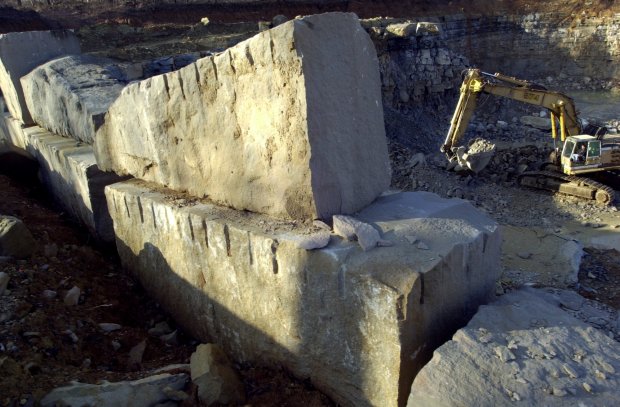
The Bedford limestone’s lighter color also made it a natural fit for architectural styles that had been en vogue since the White City milieu of the World’s Columbian Exhibition in 1893.
As economic conditions created a skyscraper boom in Chicago, “the city went from a shorter city to a taller city, and from a city of dark, dark buildings to a city of much lighter buildings,” Harrington said. “Many of those buildings were connected to that classical language that was used at the World’s Fair.”
Even structures built in subsequent styles, such as art deco and gothic buildings such as Tribune Tower, incorporated the creamy look of Bedford limestone. But more than its color, it was the stone’s maintenance-free qualities that made it the go-to cladding for so much of Chicago’s skyline.
“I’m willing to bet that when people were estimating the cost of material, it was the behavior, the more durable quality of the Bedford limestone, that made it more attractive, and if it were more yellow I have a feeling they would have found it acceptable,” he said. “Though its lighter color only enhanced its attractiveness.
Even now, more than a century later, Harrington said he hasn’t come across another material that’s been so widely distributed and “exploited around the country.”
“Mostly, you build with the materials you have at hand,” he said. “You know about the Chicago common brick — that’s a function of the clays underlying Chicago. Up the lake in Milwaukee they have the Cream City brick, which is the color of the clay they have up there. There are cities that like to use the local granite and other materials.”
For a long time, Van Etten’s firm dealt mostly in Indiana limestone, though a fire at the company’s West Pullman shop in the 1980s wiped out most of their records, so he can’t pinpoint any of their earlier projects.
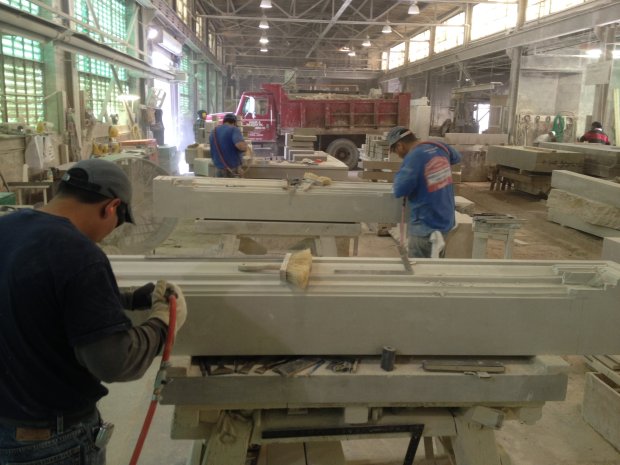
But he’s got some of the same tools used by his ancestors.
We have some of the same machinery,” Van Etten said. “We have old planers built in 1900 that are no longer made, and I believe they’re still the best way to profile stone.”
They’ve branched into other stones in more recent decades. A recent contract to restore the State Capitol in Wyoming necessitated the reopening of a long-shuttered quarry so they could access the Wyoming sandstone the original builders used.
The quarries around Bloomington and Bedford remain open, though the heyday of Indiana limestone is behind them. But the stone still retains the qualities that made it popular to begin with, Van Etten said.
“It’s always been facing pressure from new materials that are cheaper,” he said. “But it’s withstood all of them, and I don’t see any reason it won’t continue. There’s basically an endless supply of it.”
Landmarks is a weekly column by Paul Eisenberg exploring the people, places and things that have left an indelible mark on the Southland. He can be reached at [email protected].
Paul Eisenberg , 2024-02-04 11:15:08
Source link
